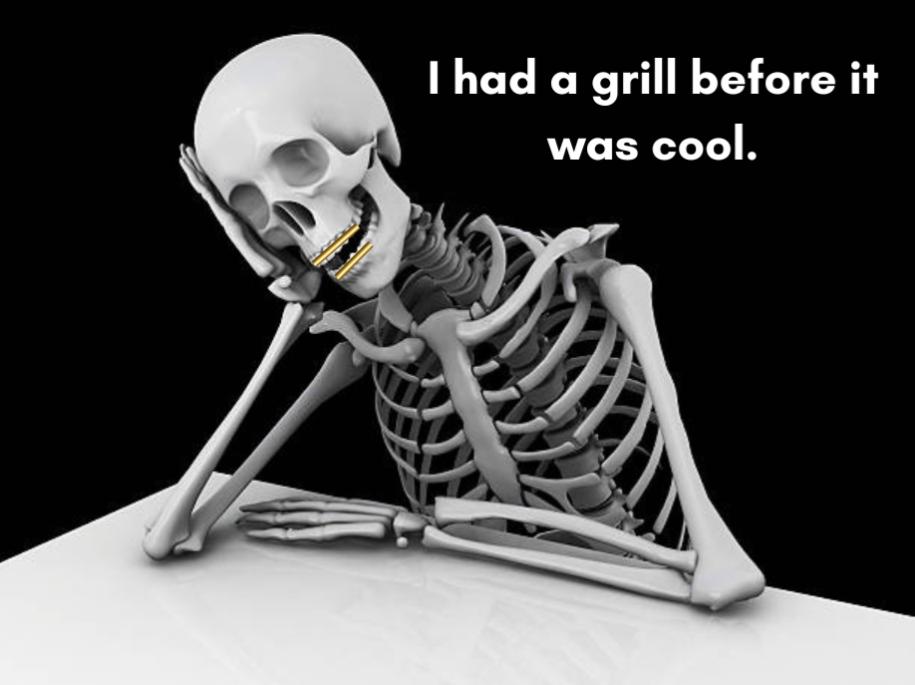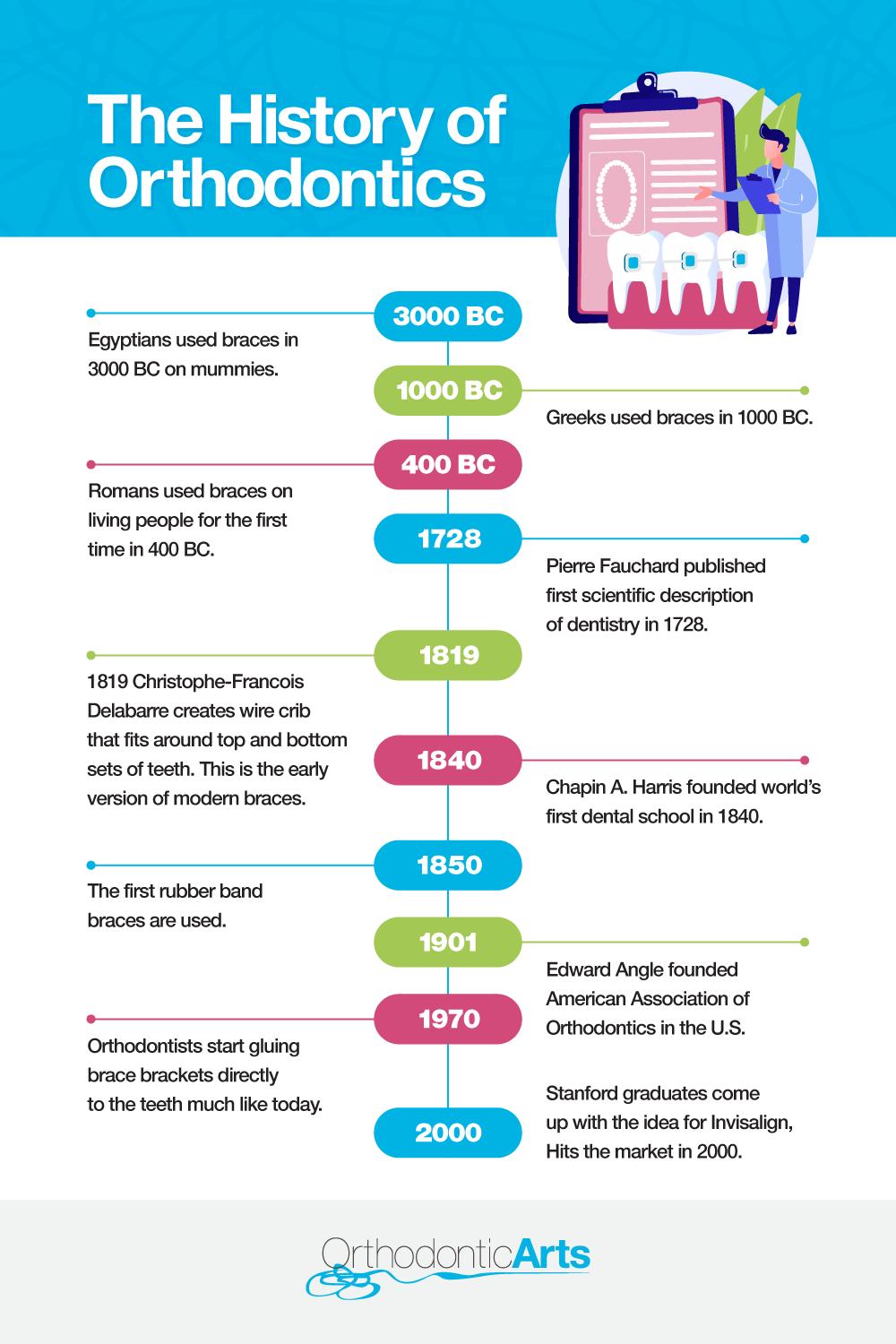History of Orthodontics
November 17, 2022The dental practice of orthodontics has a long, complicated history. Orthodontics has come a long way from its beginnings to be the safe, beneficial service it is today.
There have been many pivotal moments that define orthodontics. These moments pushed the practice into modernity and changed the industry.
Here at Orthodontic Arts, we’ve broken down the long history of orthodontics and discussed how Orthodontics Arts is at the forefront of the industry’s modern era.
As always, if you have any questions or are interested in our services, please feel free to give us a call or visit the rest of our website!
| Contents |
|---|
How Did Orthodontics Start?
Orthodontics began among many different ancient civilizations. Civilizations like the Egyptians, Romans, and Greeks all used orthodontics, albeit crudely, to some degree, for straightening teeth.
Archeologists have found metal rods along the teeth of Egyptian mummies. The Egyptians would add the rods to a person’s teeth after death, however, as afterlife presentation was crucial to the Egyptians.
Historians speculate that the Romans were the first to use braces on living people. Romans threaded a fine gold wire through crooked teeth to move teeth into the correct position.
History of Orthodontic Technology
What Was the First Orthodontic Technology?
The next big leap in orthodontics came in 1819 by Christophe-Francois Delabarre. He created a wire crib that fit around the top and bottom sets of teeth. Delabarrre intended users to wear the wire for an extended period. This design is the early version of modern braces!
Overall History of Orthodontics
- Pierre Fauchard, often called the Father of Modern Dentistry, published the first complete scientific description of dentistry in 1728.
- Chapin A. Harris founded the world’s first dental school in 1840.
- The first rubber band braces were used in 1850.
- The American Association of Orthodontics was founded in 1901 by Edward Angle in the United States.
- In the mid-70s, orthodontists began gluing brace brackets directly to teeth, much like they are today!
Changes in the last 30 years
A couple of Stanford graduates got together with a brilliant idea to make a clear plastic, horseshoe-shaped retainer to replace braces. Their idea became Invisalign, which hit the market in 2000.
Did orthodontics start for practical or cosmetic purposes?
Orthodontics started for cosmetic purposes. Ancient civilizations used braces for beautification. Only within the last couple of centuries did we learn all the actual health benefits of properly aligned teeth.
The Convenience of Modern Orthodontics
Having gold wire wrapped around your teeth might sound cool, but it must’ve been quite painful.
Modern orthodontists have greatly improved the original designs theorized by the first orthodontists.
The Process is Much Quicker
Getting your braces is a much smoother process in today’s world. 3D scanning has made getting an accurate mold of your teeth easier. And you don’t need to wear your braces as long. As a result, they are more effective today than ever.
The Process is Much Less Painful
Compared to ancient times, painkillers are available in today’s world. In combination, modern orthodontic treatments are less invasive and more precise, requiring less surgery.
The Process is Much Safer
As we mentioned, there are far fewer surgeries needed in orthodontic treatments.
But when they are necessary, they are much safer than before. Utensils are stainless steel and sterilized. Orthodontists have years of specialized training at dental schools. With that, you also have a whole team working on your teeth instead of one doctor. A team trained to be great at prevention, diagnosis, and treatment.
The Process has More Options
There are so many options in today’s orthodontic treatment world. You can have traditional braces, Invisalign, Nudge, veneers, retainers, surgery, and more.
You can choose which options are best for you and your budget. There isn’t just one road to straight teeth that you have to go down or else.
You get to decide!
The Process is More Discreet
Suppose you want to be discreet with your orthodontic treatment. In that case, there are many ways to receive effective orthodontic care while maintaining a low profile.
Removable appliances and retainers like Invisalign and Nudge offer exceptional care that remains essentially unnoticeable. But, of course, fixed retainers can be unnoticeable, too!
You could go months using Invisalign, and no one may know!
Orthodontics is More than Moving Teeth
Orthodontists perform work on teeth and jaws called Dentofacial Orthopedics.
Orthodontics helps target jaw growth issues. Orthodontics can address bad bites, overbites, or underbites. It can also prevent tooth decay. All parts of the mouth are connected, and one uneven area affects all parts of the mouth. Having a good jaw helps you have good teeth and vice versa.
A Brief History of Orthodontics: Orthodontics Has Come a Long Way
From Egyptian wires to clear aligners, Orthodontics looks totally different today. We will undoubtedly see new technology and techniques emerge in the future.
Orthodontic Arts is proud to be your number one source for Orthodontic intel. If you have any more questions or are interested in learning more about a treatment plan, please call or visit the rest of our website!
Orthodontic Arts, your number one Orthodontist in OKC. Our Certified Orthodontist provides the latest and greatest Orthodontic practices to our clients in the OKC and Midtown area. Orthodontic Arts is the best place for child and teen orthodontics as well as adult orthodontics. Be sure to ask about Invisalign and invisible braces! Contact us today at (405) 604-3745 or request an appointment.

